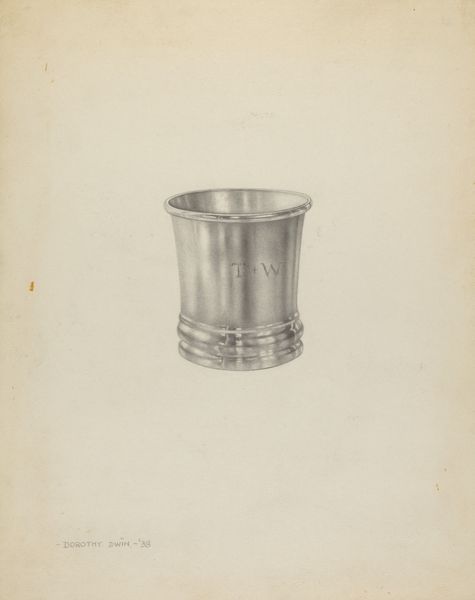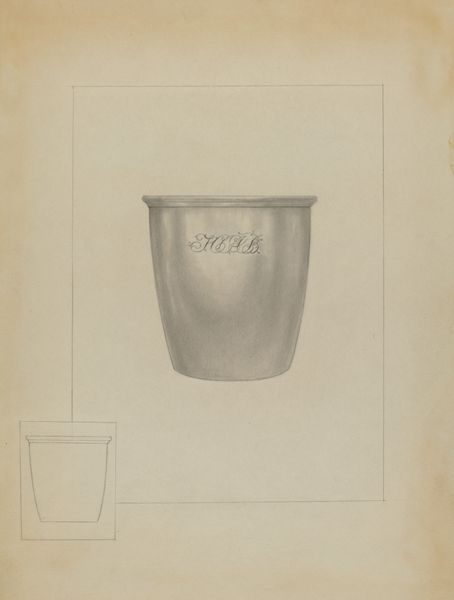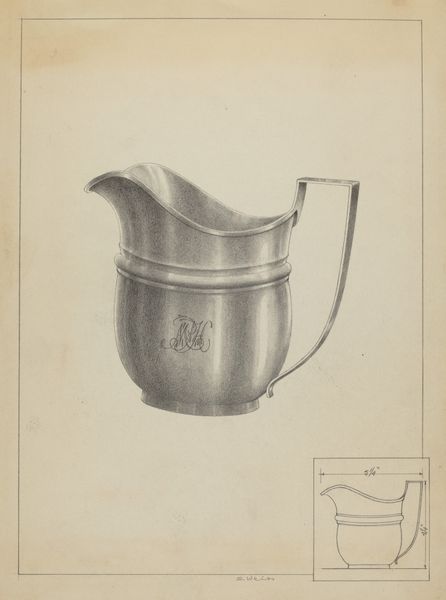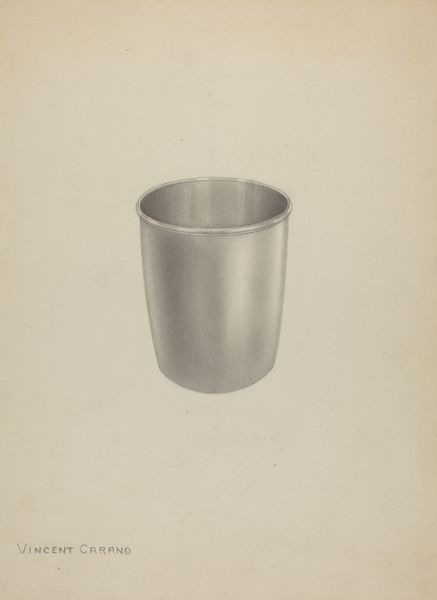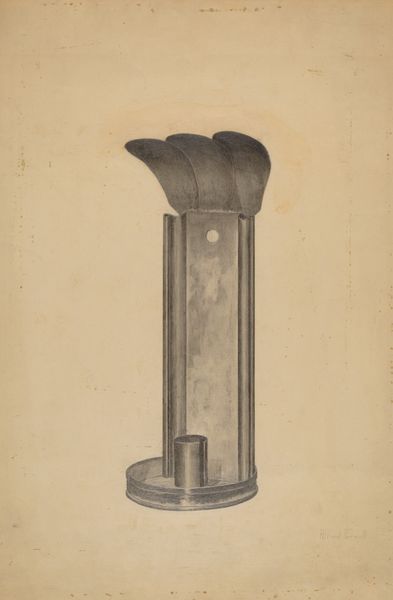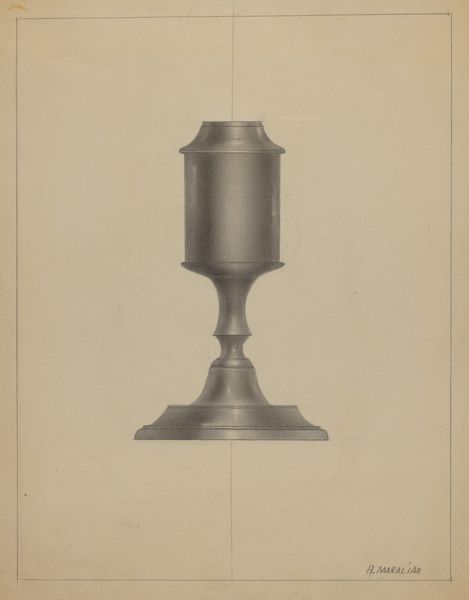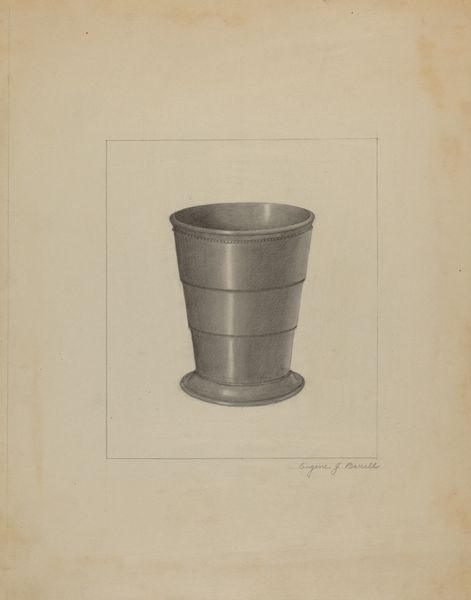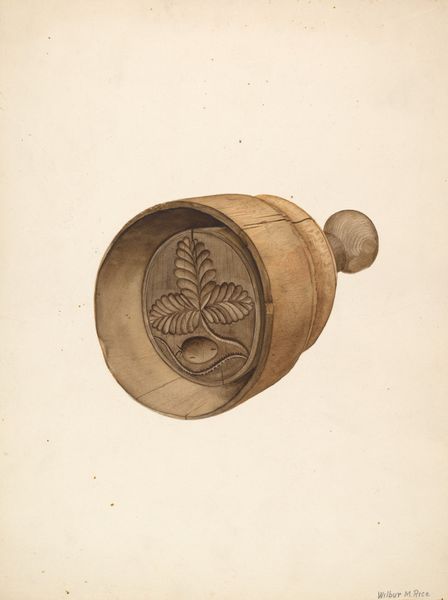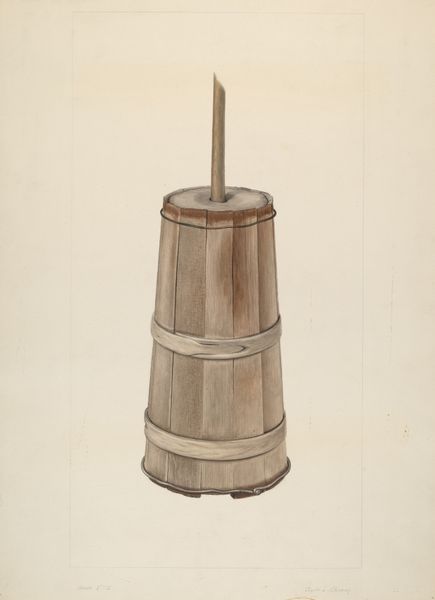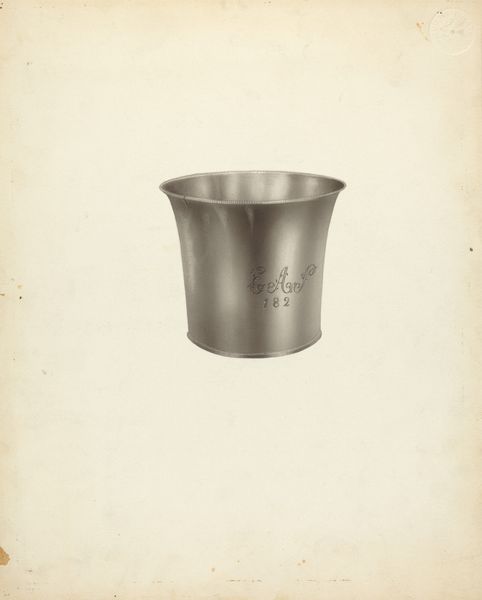
drawing, pencil
#
drawing
#
pencil drawing
#
pencil
Dimensions: overall: 35.5 x 25.5 cm (14 x 10 1/16 in.) Original IAD Object: 9" high; 5" in diameter
Copyright: National Gallery of Art: CC0 1.0
Curator: Let’s discuss this captivating pencil drawing, Metal Lantern, created around 1936 by Edward L. Loper. Editor: Immediately, I’m struck by its subtle light and shadow play. There's a remarkable textural fidelity rendered in a single medium. It almost tricks the eye. Curator: I find myself considering what the illumination of such a lantern meant during the Depression era. What spaces did it light, what activities did it enable, and who benefited? In essence, the image becomes a poignant document of everyday life, a narrative enmeshed with the social realities of the time. Editor: I appreciate the points about context. Still, I keep coming back to the pure geometric clarity of its form. Loper clearly delineates a dialogue between the cylinder of the lantern itself and the circular shapes cut into its facade, which allows one to glimpse at the object that ignites its illumination. The layering of light on the interior volume is remarkable, adding complexity to the primary form. Curator: Right. Beyond the shape itself, what does this simple source of light reveal about community resilience? In thinking about labor and working-class identity during this time, it almost becomes symbolic. The object’s simple existence is evidence of social systems and the need to build one’s life around its function. It suggests narratives about shared community and labor, about the ways communities lit each other's way, literally and metaphorically. Editor: Agreed. This interpretation is possible precisely because Loper focused on realistically portraying its three-dimensional shape through subtle gradations. Notice how he contrasts the soft exterior and sharp shadows of the work’s bottom half. In any case, he transforms something quite ordinary into a meditation on light, volume, and form through precise visual analysis and delicate modeling. Curator: Examining "Metal Lantern" invites a deeper interrogation of objects of utility and the history of working-class identity, suggesting how everyday tools are imbued with meaning beyond their primary purpose. Editor: Ultimately, it becomes clear that Loper's attention to detail helps us to observe his masterful hand, proving his thorough consideration of volume in form and, further, our consideration of context, whatever we make of it.
Comments
No comments
Be the first to comment and join the conversation on the ultimate creative platform.

